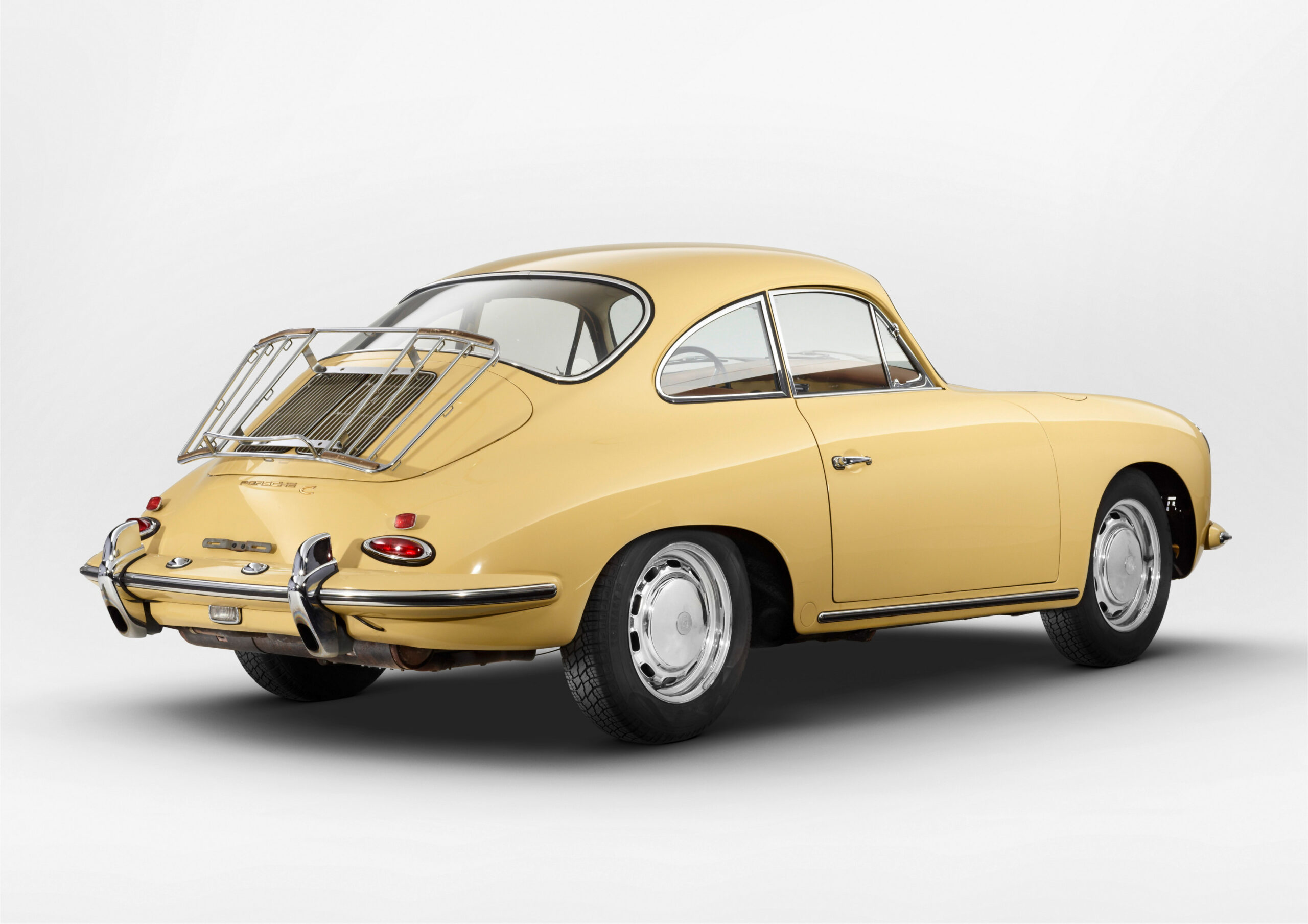The Porsche 356 C is the origin of the construction of sports cars in Germany. The success was outstanding and carried the name of the Porsche company all over the world since 1948. The origin of the Porsche sports car is still based on elements of the first Beetle. And this mixture can be guessed at by the sound of the engine. For car enthusiasts, this is the feeling of feeling the birth of a classic and a sports car legend. The engine sounds vaguely like a “Beetle”, but the connoisseur can already hear the Porsche genes that this model carries within itself for the successor. This archetype of the Porsche was built since 1948. The Porsche 356 was the first production car made by Porsche. The development of this car began in the 1940s, when Ferry Porsche, the son of Porsche founder Ferdinand Porsche, decided to create a sports car that was based on the Volkswagen Beetle, which his father had designed.
The Porsche 356 C is the origin of the construction of sports cars in Germany. The success was outstanding and carried the name of the Porsche company all over the world since 1948. The origin of the Porsche sports car is still based on elements of the first Beetle. And this mixture can be guessed at by the sound of the engine. For car enthusiasts, this is the feeling of feeling the birth of a classic and a sports car legend. The engine sounds vaguely like a “Beetle”, but the connoisseur can already hear the Porsche genes that this model carries within itself for the successor. This archetype of the Porsche was built since 1948. The Porsche 356 was the first production car made by Porsche. The development of this car began in the 1940s, when Ferry Porsche, the son of Porsche founder Ferdinand Porsche, decided to create a sports car that was based on the Volkswagen Beetle, which his father had designed.
At that time, cars were rarely seen in everyday life and when they were, it was commercial vehicles. Ferdinand Porsche is said to have said: “I looked around and couldn’t find the car I dreamed of. So I decided to build it.” That’s excitement! And there is no question that a dream does not have to be useful, it can have a form that pleases and can have anything that is far from everyday life. And that’s what Ferdinand Porsche did. In his time, the car was superfluous for everyday life and hardly anyone could afford it. For a long time, this sports car remained a coveted dream for feelings such as: freedom, independence, seduction, adventure and speed.
The 356 was designed by Porsche engineer Erwin Komenda, who also worked on the Beetle. The car featured a lightweight aluminum body and a rear-mounted, air-cooled engine, which was borrowed from the Beetle. The 356 was available in several different models, including a coupe, a convertible, and a Speedster. The early models of the 356, produced from 1948 to 1955, were known as the “pre-A” models. These cars had a 1.1-liter engine that produced 40 horsepower. In 1955, Porsche introduced the 356 A, which featured a larger 1.3-liter engine that produced 60 horsepower. This model was also available in a higher-performance “S” version, which had a 1.5-liter engine that produced 75 horsepower.
In 1959, Porsche introduced the 356 B, which featured a number of changes and improvements over the 356 A. The 356 B was available in several different models, including the Roadster, the Coupe, and the Convertible D. The 356 B also featured a new 1.6-liter engine that produced 75 horsepower. The 356 C was introduced in 1963 and featured several updates, including a new 1.6-liter engine that produced 95 horsepower, as well as disc brakes on all four wheels. This model was also available in a higher-performance “SC” version, which had a 1.7-liter engine that produced 110 horsepower. It was the last model of the 356.
The Porsche 356 was a highly successful car, with more than 76,000 units produced during its production run. It was a popular choice among sports car enthusiasts, and it was also successful in motorsports, winning several races and rallies. The 356 was also the foundation of Porsche’s success as a sports car manufacturer, and it laid the groundwork for the development of future Porsche models, such as the 911.



